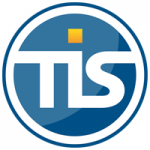The impact of blockchain technology on central counterparty clearing houses
| 23-11-2017 | Treasurer Development | Minor Treasury @ Hogeschool Utrecht | Frans Boumans |
Today’s blog has been written by Youri Toepoel, Romy Steegwijk & Dirk Heesakkers , who are 3 students studying for the minor Treasury Management at the University of Applied Sciences in Utrecht. We welcome their contribution – it is good to see the youth engaging in Treasury matters! Here is their opinion on Blockchain technology and its impact on central counterparty clearing houses.
A central counterparty clearing house can reduce counterparty risks associated with doing business with unfamiliar counterparties in unfamiliar markets. When businesses lack the capabilities, resources and expertise required to reduce counterparty risks, a central counterparty clearing house might be the solution. In recent years new disruptive technologies have been developed. Cryptocurrencies are becoming more known worldwide and the underlying technology, the blockchain, might be able to decentralize current services offered by financial institutions like banks.
Counterparty risk
Counterparty risk is the possibility that someone you do business with is unable to meet his/her obligations with you. Events during the recent credit crunch, particularly with Lehman Brothers, showed that banks and businesses had put too much trust in the credit ratings formed by the credit agencies. Corporates based creditworthiness of counterparties mainly, or even only, on the credit ratings given by credit rating agencies, expecting those ratings to be accurate and trustworthy. This has proven to be wrong and since the credit crunch many businesses started to measure and control counterparty risk based on other factors beside the credit rating received from the credit rating agencies (Treasury Today, 2014).
The counterparties
For the treasury function the counterparty risk is mainly associated with the banks and other financial institutions since these are the parties the treasury function is mostly dealing with. Additionally, also governments are important given they supply the “risk free” government bonds, but as seen with the government of Greece even governments show the ability to get into financial problems. The treasury function will often deal with these parties to attract or repel liquidity, derivatives or long-term loans to support the business’s day-to-day operations. In the end, exposure to suppliers and customers are also important to the counterparty risk.
Central Counterparty Clearing House (CCP)
A central counterparty clearing house (CCP) is an organisation that exists in various European countries to help facilitate trading done in European derivatives and equities markets. These clearing houses are often operated by the major banks in the country to provide efficiency and stability to the financial markets in which they operate. CCPs bear most of the credit risk of buyers and sellers when clearing and settling market transactions (Investopedia).
Blockchain versus central counterparty clearing house
A CCP offers a good solution to the counterparty risk that most companies face when doing business with counterparties. But this service, as it basically provides a settlement between two parties, might be a prey for decentralization by technology based on the Blockchain.
The Blockchain is often simply described as a distributed ledger and has the capability to replace services being provided by central service providers like banks. The unique part is the absence of a trusted third party (a bank that we visit or to which we log in with a key, an Amazon.com, eBay or whoever you know and trust…) (Servat, 2015).
Currently, the only obstacle seems to be regulation since the blockchain already shows numerous application possibilities. Lots of banks and other financial institutions are currently investing big money in the blockchain technology to find out in which way they can use it (or save themselves with?) (Scuffham, 2017).
Whether the blockchain totally replaces or gets integrated by financial institutions like the CCP, these innovations are surely interesting to follow and keep track of (Treasury Today, 2014).
Sources/bronnen/aanvullend
https://medium.com/@colin_/central-counterparties-ccps-in-decentralised-blockchains-f2cf671f5787
http://www.investopedia.com/terms/c/ccph.asp
http://treasurytoday.com/2016/05/blockchain-technology-ttqa
https://www.treasury-management.com/article/1/354/2920/blockchain-%96-disruption-or-hype-.html
http://treasurytoday.com/2017/09/the-rise-and-rise-of-blockchain-tttech
https://fd.nl/beurs/1222842/nieuwkomer-ripple-provoceert-betaalbedrijf-swift-op-eigen-terrein
Minor Treasury Management
More information about the minor Treasury Management at the University of Applied Sciences?
Please contact Frans Boumans.

Manager Minor Treasury Management @ University of Applied Sciences in Utrecht









